ggplot2 – 使用图例
ggplot2 – 使用图例
轴和图例统称为指南。它们允许我们从图中读取观察结果并将它们映射回原始值。图例键和刻度标签均由比例中断确定。图例和轴是根据绘图所需的相应比例和几何图形自动生成的。
将实施以下步骤以了解 ggplot2 中图例的工作 –
在工作区中包含包和数据集
让我们创建相同的图来关注使用 ggplot2 生成的图的图例 –
> # Load ggplot > library(ggplot2) > > # Read in dataset > data(iris) > > # Plot > p <- ggplot(iris, aes(Sepal.Length, Petal.Length, colour=Species)) + geom_point() > p
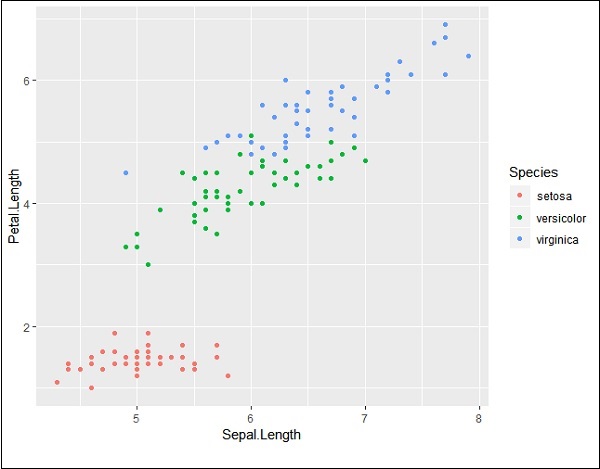
如果您观察该图,则会在最左角创建图例,如下所述 –
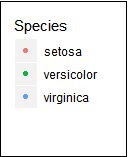
在这里,图例包括给定数据集的各种类型的物种。
更改图例的属性
我们可以在属性“legend.position”的帮助下删除图例,我们得到适当的输出 –
> # Remove Legend > p + theme(legend.position="none")
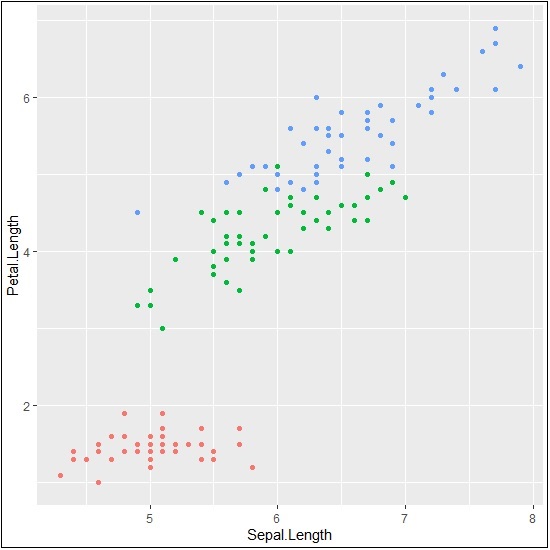
我们还可以使用属性“element_blank()”隐藏图例的标题,如下所示 –
> # Hide the legend title > p + theme(legend.title=element_blank())
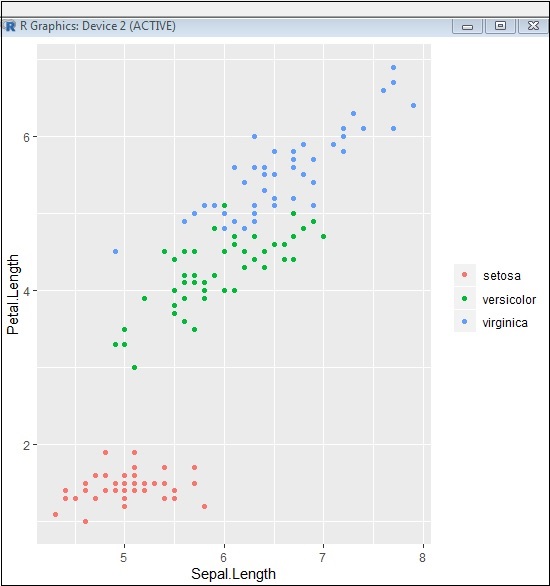
我们还可以在需要时使用图例位置。此属性用于生成准确的绘图表示。
> #Change the legend position > p + theme(legend.position="top") > > p + theme(legend.position="bottom")
顶级代表
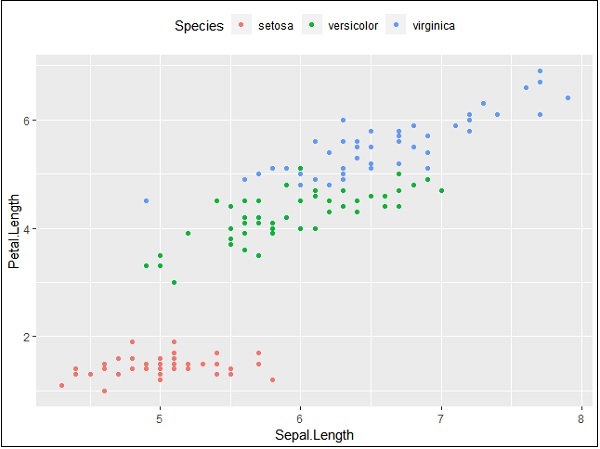
底部表示
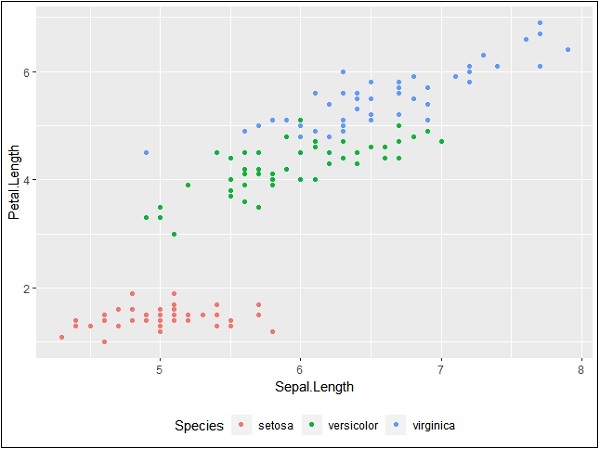
更改图例的字体样式
我们可以更改标题的字体样式和字体类型以及图例的其他属性,如下所述 –
> #Change the legend title and text font styles > # legend title > p + theme(legend.title = element_text(colour = "blue", size = 10, + face = "bold")) > # legend labels > p + theme(legend.text = element_text(colour = "red", size = 8, + face = "bold"))
生成的输出如下 –
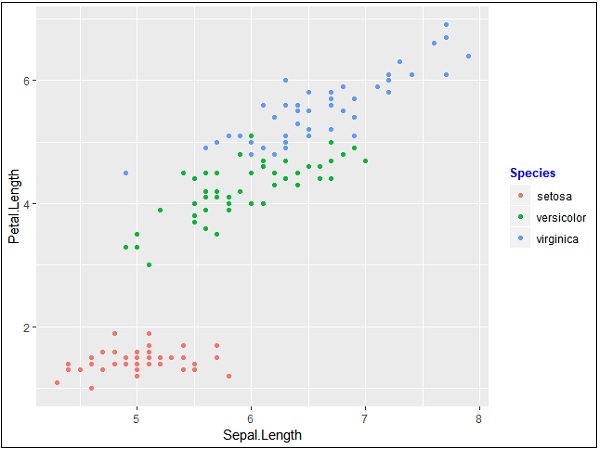
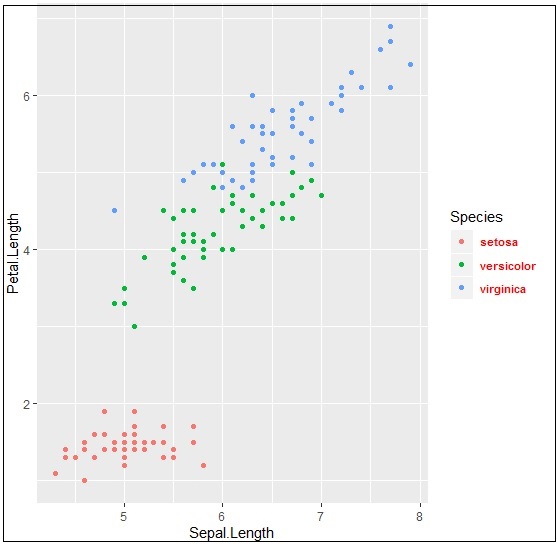
即将到来的章节将重点介绍具有各种背景属性的各种类型的图,例如颜色、主题以及从数据科学的角度来看每一个的重要性。
